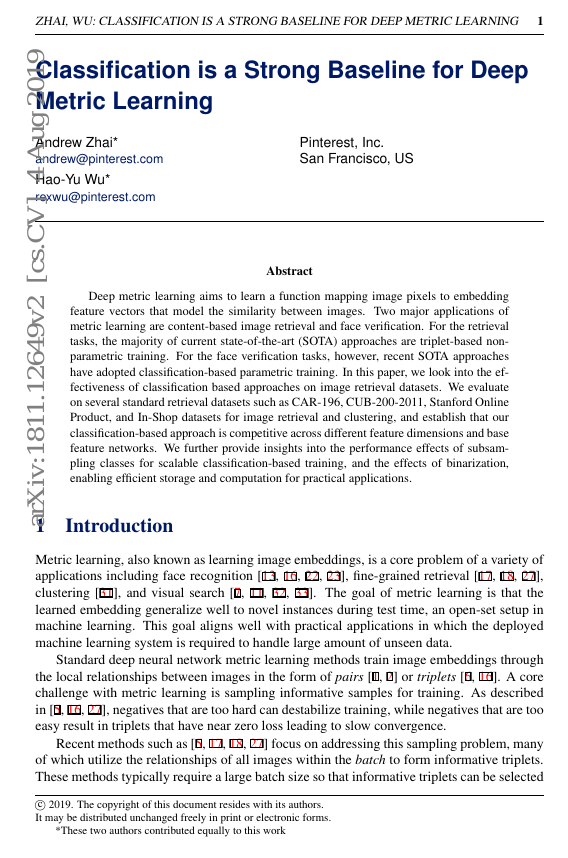Command Palette
Search for a command to run...
Andrew Zhai; Hao-Yu Wu

Abstract
Deep metric learning aims to learn a function mapping image pixels to embedding feature vectors that model the similarity between images. Two major applications of metric learning are content-based image retrieval and face verification. For the retrieval tasks, the majority of current state-of-the-art (SOTA) approaches are triplet-based non-parametric training. For the face verification tasks, however, recent SOTA approaches have adopted classification-based parametric training. In this paper, we look into the effectiveness of classification based approaches on image retrieval datasets. We evaluate on several standard retrieval datasets such as CAR-196, CUB-200-2011, Stanford Online Product, and In-Shop datasets for image retrieval and clustering, and establish that our classification-based approach is competitive across different feature dimensions and base feature networks. We further provide insights into the performance effects of subsampling classes for scalable classification-based training, and the effects of binarization, enabling efficient storage and computation for practical applications.
Code Repositories
Benchmarks
| Benchmark | Methodology | Metrics |
|---|---|---|
| image-retrieval-on-cars196 | NormSoftmax2048 (ResNet-50) | R@1: 89.3 |
| image-retrieval-on-cub-200-2011 | NormSoftmax2048 (ResNet-50) | R@1: 65.3 |
| image-retrieval-on-in-shop | NormSoftmax2048 (ResNet-50) | R@1: 89.4 |
| image-retrieval-on-sop | NormSoftmax2048 (ResNet-50) | R@1: 79.5 |
Build AI with AI
From idea to launch — accelerate your AI development with free AI co-coding, out-of-the-box environment and best price of GPUs.